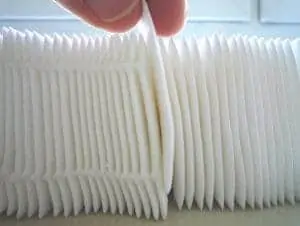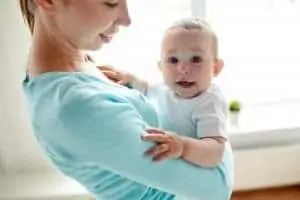Leaking is a normal part of breastfeeding, but it can still be embarrassing. Learning how to use nursing pads the right way can help reduce the embarrassment and protect your clothes from unsightly stains.
How you use breastfeeding pads will depend on the type of pad that you purchased. Disposable and reusable pads work similarly, but they do have some slight differences. Don’t worry; they’re both easy to use and understand.
Using Disposable Nursing Pads
Here’s what you need to do!
Get Your Nipple Ready
Make sure your nipples are dry and clean to help keep a bacteria-free environment. If your nipples are wet, it can lead to yeast development. If your nipples are sore or irritated, apply nipple cream before the pad.
Take Off The Backing
Now, take off the backing from the pad along with any wrappers. This backing is used to adhere the pad to your bra or shirt.
Place Your Nipple in the Center
For the pad to absorb as much of the milk as possible, your nipple needs to be placed in the center. Otherwise, the milk won’t spread evenly throughout it. Before you put the pad on your bra, place it over your bra, centralizing your nipple.
Adhere to Your Bra & Shirt
Now, bring your bra or shirt in place and bring it towards your breast. Then, press the bra against your pad and breast, adhering it in place.
Replace When Damp
To prevent yeast or bacteria development, change your pads when they’re damp from leakage. Discard it in the trash and replace it with a new one. It’s that simple!
Do you really need to use nursing pads? Here is why I think you should.
Using Reusable Nursing Pads
Here’s how you use these pads.
Make Sure The Pads Are Dry
These pads are thicker than your average clothing, so you need to make sure they’re entirely dry before using. If they aren’t, bacteria could grow inside of the pads.
Prepare Your Nipples
Your nipples should be clean and dry before using a new pad. You should apply the nipple cream before the pad.
Put the Pad in Your Bra
Since reusable pads don’t have an adhesive backing, you have to put these inside the cup of your bra first to make sure its appropriately placed. Try to center your nipple while placing the pad in place.
Check Your Nipple Location
It’s not uncommon to have to adjust your pad because they can shift. Since reusable pads are thicker, you might want to wear a padded or thicker bra to hide it better.
Replace When Wet
Take the pad off when it’s wet. If you’re out, keep a Ziploc bag with you so you can store them until you return home. Don’t let them sit too long before washing because bacteria will develop.
Wash Your Reusable Pads
It would be best if you looked at the packaging before washing them, so you know what method is the best. The washing method will vary a bit because some pads are made from different materials. You can use cotton, bamboo, wool, or a mixture of these materials.
Some pads need to be hand-washed while others need to be washed on either hot or cold water. The same goes for either line drying or machine drying.
If you tossed out the packaging, you should be able to find the instructions online for the particular pad that you used. All will tell you not to use fabric softeners because they impact absorbency.
How to Handle Yeast in Reusable Pads
If you’re using cloth pads and discover that you or your baby has thrush, you should switch to disposable pads. However, you need to wash your reusable pads. Yeast can live in the fabric and survive the washing process. So, here’s what you need to do.
- Don’t use reusable pads for 2-4 weeks, so they can set aside and dry, letting the yeast die off.
- Add one cup of vinegar to your washing machine.
- Let your breast pads dry in the sunlight.
Using Nursing Pads is Simple
See! There is nothing to it. Learning how to use nursing pads takes just a few seconds. Switching them in and out will become second nature, and you’ll do it so often that you won’t even need to think about what you’re doing anymore.
Hey, this is Linda. My biggest accomplishment in life is being a mother of four children. Their current ages range from almost ten years old down to 20 months old.
I’m passionate about writing parenting articles because I understand so well all of the problems and trials you face as a parent. From breastfeeding woes to budgeting problems and behavior problems, along with everything in between, chances are I’ve faced it over the last ten years. Read more about Linda here.






